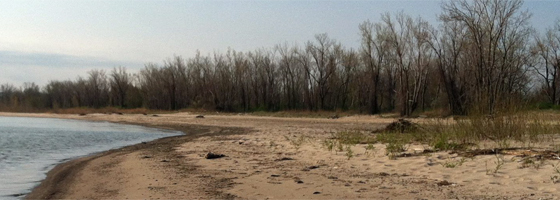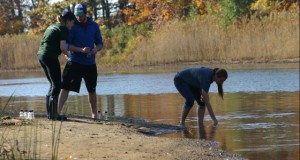Lake Erie sampling shows unintended consequences of artificial sweeteners

Scientists designed artificial sweeteners to be consequence-free. They deliver sweetness without gut-busting calories. But a new Mercyhurst University study shows that, while one sweetener skips the abdomen, it goes straight to the watershed.
The study focuses on sucralose, one of the most common artificial sweeteners used in more than 4,500 foods. The chemical passes through the body undigested and unchanged, leaving no nutrients.
“If it’s not metabolized, where is it ending up?” said Amy Parente, a Mercyhurst University biochemistry professor.
She asked this question two years ago when she sought to take on new research that is applicable to people’s everyday lives. She now knows at least part of the answer. Sucralose passes through water treatment plants and dissolves into watersheds.
 Parente and several undergraduate Mercyhurst students sampled Lake Erie surface water from Presque Isle, Penn. and found measurable amounts of sucralose in the order of 150 parts per trillion.
Parente and several undergraduate Mercyhurst students sampled Lake Erie surface water from Presque Isle, Penn. and found measurable amounts of sucralose in the order of 150 parts per trillion.
Sucralose gives fish and animals the same false sense of sweetness and nutrition it gives humans. Parente said sucralose can affect foraging behaviors of small water dwelling fauna low on the food chain. It has the potential to affect animals all the way up the food system back to humans.
Parente, though, said her intention with this research is not to alarm people. Instead, she wants to use the information to make people aware of how their daily actions can potentially affect the world around them. “People need to start thinking about things that are being put in the environment,” Parente said.
The Mercyhurst team collected water samples for chemical analysis from Presque Isle. Using an analytical separation and detection method called Liquid Chromatography with Mass Spectrometry they were able to identify and quantify sucralose levels from lake water samples.
Undergraduate students Jennifer Coulombe, Erin Cox, Juliane Harmon, Michael Gigliotti, Gregg Robbins-Welty and Kristen Vidmar all joined in the research. Parente said she considers them colleagues as they perform many of the same research tasks, such as sampling, processing and analyzing results.
Recently, Parente received a grant from the Regional Science Consortium at the Tom Ridge Environmental Center to continue monitoring for sucralose in more focused areas. She plans to test outlets of water treatment plants. She thinks concentrations of sucralose will be much more substantial there and hopes to work with treatment plant operators to conduct the research.
Sucralose is one of many unnatural additives created to make our lives easier. Parente’s research shows we still know little about long term ramifications unnatural chemicals may have on the natural world.
Her findings, though, display two certainties: nothing comes without consequence, no matter how few calories, and consumers have the power. “I guess I feel like Dr. Seuss summed it up best in saying, ‘Unless someone like you cares a whole awful lot, nothing is going to get better. It’s not.’”
Image: The Lake Erie beach in Presque Isle, Pa. where Parente and her students sampled for sucralose (Credit: Amy Parente)





0 comments